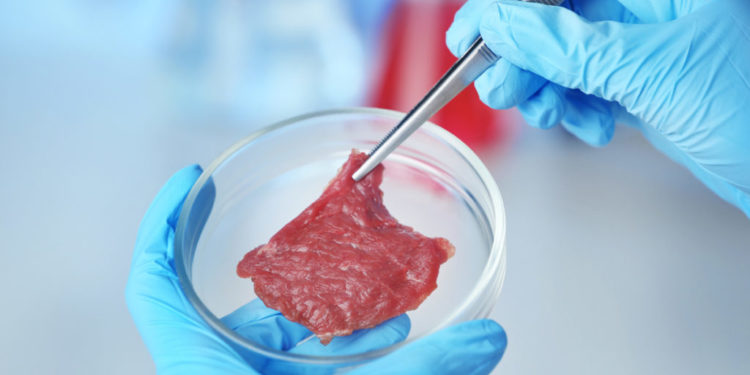A team of Harvard researchers “produced” in the laboratory a synthetic steak with the same consistency as natural meat.
A day will come when we will no longer be able to distinguish between synthetic and natural meat. And in part that’s already the case today: if not for the taste, at least for the texture. A team of researchers from Harvard’s School of Engineering and Applied Sciences (SEAS) developed a steak with the same consistency as real meat in the laboratory. The researchers recreated the properties of beef and rabbit muscle cells using an edible gelatin scaffold. In organic chemistry, the scaffolds are a kind of three-dimensional scaffold that supports the cellular architecture and determines the structure of the fabrics. To “mimic” natural meat, Harvard researchers used an edible gelatinous matrix that holds the muscle fibres in place. The jelly was modelled using a technique known as “Jet-Spinning Rotary Immersion” (IRJS). This procedure uses centrifugal force to create nanofibers of specific shapes and sizes. The researchers then “spun” the gelatin fibers to create the basis for the cells in the culture. The fibers mimic the extracellular matrix of organic tissue and their consistency is very similar to that of a natural steak.
Synthetic and natural meat: steaks in comparison
The consistency of the synthetic meat was compared with that of a natural steak by mechanical testing. In an article published on the web, the authors of the study recounted the amazement they felt at the results of their analyses. “When we analyzed the microstructure and texture, we found that although natural meat contained more muscle fibers, the texture of the cultivated and natural products was very similar” they explained. The researchers’ experiment was an important step towards the production and marketing of synthetic meat. The step now is to re-create in the laboratory the taste (as well as the texture) of the natural meat. And, of course, to develop production methods that guarantee the production of large quantities of synthetic meat at an affordable price and with a low impact on the environment. The challenge has been set. FAO has estimated that world meat consumption will increase by 73% by 2050 and, according to Greenpeace, industrial livestock farming is the second largest cause of fine dust pollution. Producing good, sustainable and affordable synthetic meat could be a good way to combat pollution and improve the quality of the world’s food.

































